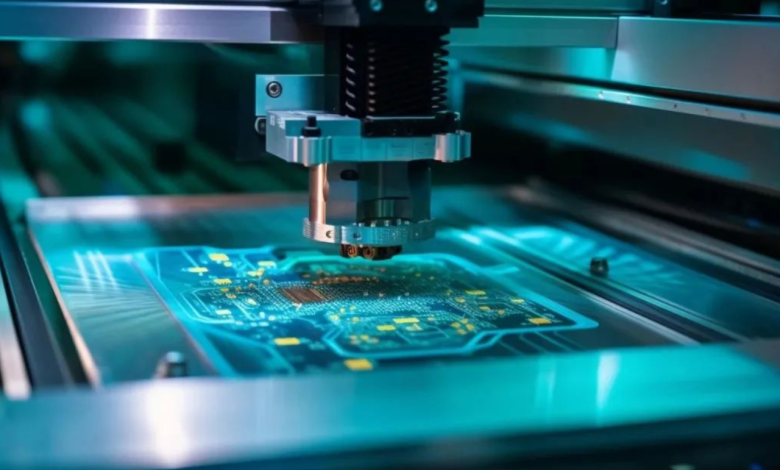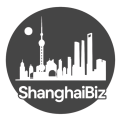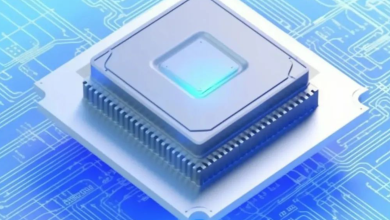The 2nd China Shanghai Special Electronic Components Exhibition 2026: A Gateway to Cutting-Edge Defense & Industrial Tech


Why This Expo Matters in Today’s Geopolitical Climate
Scheduled for April 23-25, 2026, at the Shanghai Auto Exhibition Center, the 2nd China Shanghai Special Electronic Components Exhibition (SECE 2026) is set to be Asia’s premier showcase for mission-critical electronics in defense, aerospace, and advanced industrial applications. Organized by the China Defense Industry Enterprises Association (CDIEA), this event arrives at a pivotal moment—when global tech decoupling and military-civil fusion (MCF) strategies are reshaping supply chains.
Having attended similar expos in Munich (Electronica) and Singapore (ITAP), I can confidently say SECE stands out for its focus on China’s indigenous innovation. Unlike commercial electronics fairs, SECE 2026 zeroes in on:
✔ Supply chain resilience – Addressing choke points in semiconductors, RF components, and advanced materials
✔ Military-civil synergy – Bridging defense contractors (e.g., CASIC, AVIC) with private tech giants (e.g., Huawei, CETC)
✔ “Belt & Road” partnerships – With 30+ embassies expected to send delegations
Key Themes Driving Participation
- Localization of “chokepoint” tech: High-end MLCCs, GaN power devices, and radiation-hardened ICs
- Next-gen warfare electronics: AI-powered radar, quantum sensors, and hypersonic missile components
- Commercial crossover: EV/5G demand fueling military-grade SiC and advanced packaging
Expo Highlights: From Cutting-Edge Tech to Closed-Door Deal-Making
1. Exhibition Zones – Where Industry Gaps Meet Solutions
SECE 2026’s 50,000+ sqm floor will feature six specialized zones:
| Zone | Key Products | Strategic Importance |
|---|---|---|
| Semiconductors | SiC/GaN power devices, SoC designs, 3rd-gen semiconductors | Critical for EVs, railguns, and satellite comms |
| RF/Microwave | mmWave antennas, EMI shielding, LTCC filters | 5G/6G infrastructure and electronic warfare |
| Precision Ceramics | HTCC/LTCC packages, AlN substrates, semiconductor ceramics | Enabling miniaturized radar/guidance systems |
| Testing/Measurement | Terahertz analyzers, quantum calibration tools | QA for aerospace-grade components |
| Connectors/Cables | MIL-SPEC circular connectors, superconducting wires | Hypersonic missile and naval applications |
| Embedded Systems | Ruggedized edge AI computers,北斗 (BeiDou) navigation modules | Autonomous drones and battlefield IoT |
Why this matters: Last year’s exhibitors (e.g., China Electronics Tech Group, GWIC) reported $220M+ in on-site deals—mainly for avionics and naval electronics.
2. High-Stakes Forums & Matchmaking
SECE isn’t just a trade show—it’s a deal-flow accelerator. Noteworthy sessions include:
🔹 Defense Supply Chain Summit
- Focus: Dual-use tech export controls (e.g., U.S. EAR updates)
- Panelists: PLA procurement officers + private sector CEOs
🔹 “Belt & Road” Procurement Roundtables
- Pakistan, Iran, UAE delegations seeking Chinese radar/comm tech
- Matchmaking with CETC, Huawei Marine
🔹 Closed-Door Tech Transfers
- SOEs like AVIC scouting startups for quantum encryption and drone jamming tech
Pro tip: At past CDIEA events, 80% of MOU signings occurred during these sessions—not on the exhibit floor.
Who’s Attending – And Why You Should Care
1. Chinese Military-Industrial Complex
- PLA branches: Prioritizing AI chips, anti-jamming GPS, and EW systems
- State-owned giants: CASIC (missiles), CSSC (ships), CASC (space) scouting suppliers
- Russian/ Belarusian firms: Sourcing SMIC-made rad-hard ICs via 3rd parties
- “Belt & Road” allies: Turkey’s Aselsan, Pakistan’s NESCOM seeking tech transfers
3. Western Companies on Thin Ice
- European test-equipment makers (e.g., Rohde & Schwarz) balancing China sales vs. U.S. sanctions
- Japanese material suppliers (e.g., Murata, TDK) offering “civilian-grade” ceramics
My observation: SECE increasingly mirrors Cold War-era tech fairs—where geopolitical alignments dictate deal flows.
3 Takeaways for Businesses Eyeing SECE 2026
1. For Chinese Suppliers: Showcase “Localization” Credentials
- Highlight domestic alternatives to sanctioned tech (e.g., NAURA’s etch tools replacing Lam Research)
- Case study: SICC Semiconductors won $40M in SiC orders after proving 100% non-U.S. equipment use
2. For Foreign Firms: Master the “Dual-Use” Tightrope
- Swiss/German firms now ship “civilian-certified” versions of defense tech (e.g., lower-precision oscilloscopes)
- Workaround: Partner with Hong Kong entities for sensitive transactions
3. For Startups: Target Niche “Chokepoint” Tech
- Hot areas: Chiplet packaging, cryogenic electronics, and MEMS sensors
- Success story: Eswin Computing secured PLA funding after exhibiting RISC-V server chips at SECE 2024
Final Verdict: A Must-Attend for Defense Electronics Insiders
SECE 2026 is more than an expo—it’s a barometer for China’s tech decoupling progress. Key angles to watch:
🔸 Supply chain shifts: Can Chinese firms replace Qorvo’s RF chips or Coherent’s laser diodes?
🔸 New alliances: Will Saudi Arabia/Iran sign joint ventures for Chinese radar tech?
🔸 Innovation hotspots: Quantum radar and photonics integration could steal the spotlight
Bottom line: Whether you’re a procurement officer, engineer, or investor, SECE offers unparalleled access to China’s closed-loop defense tech ecosystem. Just remember—what happens in Shanghai’s exhibition halls could reshape global power balances.




